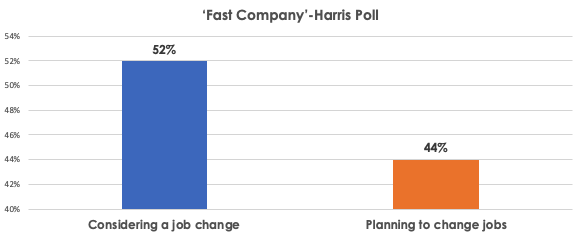
Every successful business leader knows, regardless of their management style, that they have to find ways to engage and motivate their employees if they want to succeed.
In today’s virtual work world, it’s never been harder to keep your workforce engaged. When you can’t get together face-to-face, working collaboratively to solve problems is hard and can lead to burnout.
This gap in the ability to engage is driving massive changes in the workplace. A February Harris Poll found that fifty-two percent of workers were thinking about changing their jobs in 2021—a clear sign that employees feel out of touch and disengaged with their work.

This lack of employee engagement is driving many of the best and brightest technology companies in the world, like Microsoft and Salesforce, to use technology to reinvent the way workers collaborate.
Suffice-it-to-say, if you’re sensing your employees or members are not engaged, you’re not alone.
Lessons in engagement from the healthcare industry
At Twill, we see these opportunities all over the place in healthcare. We work hard at creating new member- and patient-centered experiences that can become an integral part of larger healthcare ecosystems that get people to engage with their healthcare digitally.
What we’ve seen in our business and throughout healthcare is that informed, proactive engagement with people can make them healthier and happier. When we give people tools they can use to care for themselves, outside of a doctor’s office, they’re typically more engaged in their own self-care over longer periods of time.
Once people are engaged, it’s easier for them to do things like follow their doctor’s advice, or take their medications as prescribed.
The same thing is true with your workforce. If you want them to help your business succeed, you need to keep them engaged.
Can behavioral health therapy help your team?
At Twill, our digital therapies use multiple disciplines like cognitive behavioral therapy (CBT), positive psychology and mindfulness to facilitate positive behavior change.
These kinds of therapies have clinically demonstrated the ability to help people change their behavior, develop a greater sense of confidence in their own abilities, and ultimately become more effective at work and in their personal lives.
If you’re looking for advice on how to engage your employers and increase their self-confidence, you’ll want to read this article on The Upside, "5 Things to Do When You're Feeling Unsure of Yourself."
In this article, our experts break down why self-confidence is good for you, and suggestions that anyone on your team can use to feel more confident and engaged at work.
Check out these five tips and think through ways you could deploy one or more of them in one-on-ones, or at scale, in team meetings.
- Confidence Hack #1: Make a Positivity List
- Confidence Hack #2: Get Out of Your Head
- Confidence Hack #3: Join a Mutual Admiration Society
- Confidence Hack #4: Take Other People Out of the Equation
- Confidence Hack #5: Keep Perspective
You May Also Like:
- Audio White Paper: Where Mental Health Still Misses the Mark
- Downloadable guide: How (and Why) to Implement Digital First Behavioral Health Solutions
- A letter from Twill's CEO: Connection is Healthcare
If you have questions about how Twill can help your business, you can also schedule a demo with our Health Solutions team.
